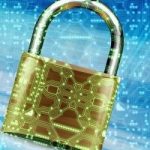Quantum News Briefs April 25: New foundry to accelerate quantum information research at Argonne National Laboratory; Update for “European Competence Framework for Quantum Technologies”; International research offers an intricate understanding of how quantum systems change fluctuations over time + MORE.

Quantum News Briefs April 25: New foundry to accelerate quantum information research at Argonne National Laboratory; Update for “European Competence Framework for Quantum Technologies”; International research offers an intricate understanding of how quantum systems change fluctuations over time + MORE.
New foundry to accelerate quantum information research at Argonne National Laboratory
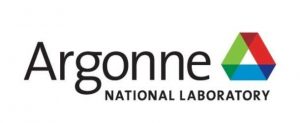 The U.S Department of Energy’s (DOE) Argonne National Laboratory has built the Argonne Quantum Foundry as part of its mission to accelerate advances in quantum information science. The foundry is a national source of materials and data for quantum research that is unique in the Midwest.
The U.S Department of Energy’s (DOE) Argonne National Laboratory has built the Argonne Quantum Foundry as part of its mission to accelerate advances in quantum information science. The foundry is a national source of materials and data for quantum research that is unique in the Midwest.
On April 19, Argonne marked its official opening at a ribbon-cutting celebration during which attendees toured the 6,000-square-foot research facility.
“Our foundry will spur advances to quantum information science and technology for the benefit of the nation,” said Argonne Director Paul Kearns. “With this world-class facility, Argonne is empowering quantum research to maintain U.S. scientific leadership and economic competitiveness.”
The creation of the Argonne Quantum Foundry, a key part of the lab’s quantum program, was led by Q-NEXT, a DOE National Quantum Information Science Research Center hosted at Argonne and founded in 2020. The foundry’s establishment and operation are a major part of Q-NEXT and set it apart as a quantum research center. Part of the Q-NEXT mission has been to make quantum materials available to researchers, meeting a critical need in quantum information research.
“There are few places in the country dedicated to creating high-quality, standardized materials for quantum technologies, and we are pleased that one of them is now here at Argonne,” said Q-NEXT Director David Awschalom, who is also an Argonne senior scientist, the Liew Family Professor of Molecular Engineering and vice dean for Research and Infrastructure at the University of Chicago Pritzker School of Molecular Engineering (PME), and the director of the Chicago Quantum Exchange. “Now that the foundry is open, we look forward to making this resource available to the national quantum information science community.”
The foundry addresses the needs of the quantum information field on two fronts. One is to accelerate research. The second need is to strengthen the U.S. quantum ecosystem. Click here to read original article by Leah Hesla, Argonne Lab, in-entirety.
Update for European Competence Framework for Quantum Technologies
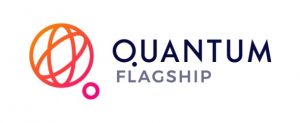 The Quantum Flagship education team has prepared a new version of the European Competence Framework for Quantum Technologies incorporating feedback and extending the framework with proficiency levels and key skills to prepare, map and compare educational programs in quantum technologies.
The Quantum Flagship education team has prepared a new version of the European Competence Framework for Quantum Technologies incorporating feedback and extending the framework with proficiency levels and key skills to prepare, map and compare educational programs in quantum technologies.
The new 2.0 version of the European Competence Framework for Quantum Technologies was released at World Quantum Day 2023. It maps the landscape of possible competencies and skills in Quantum Technologies. The framework has been compiled and revised with extensive input from a multitude of stakeholders. It allows a straightforward comparison between competencies and will be used in the European Quantum Readiness Center (EQRC) to map and compare courses. The EQRC is a pan-European initiative committed to empowering Europe with Quantum Readiness. The goal is to create a quantum-aware society and to develop and empower the quantum workforce of tomorrow.
The Competence Framework was compiled by the QTEdu team in a bottom-up approach. Between summer 2020 and spring 2021, input for the framework as well as predictions around the future quantum workforce were collected in an iterative study. Details of the study are documented in The Future Quantum Workforce: Competences, Requirements and Forecasts (preprint, to be published in Phys. Rev. Phys. Educ. Res.). The beta version of the framework was refined to version 1.0 by conducting expert interviews for each domain. The publication of a Methodology and Version History by the European Commission provided a complete overview of the documentation process and the steps taken to arrive at the framework version 1.0. For the current version 2.0, feedback and usage experiences have been incorporated and events have been organised to involve the community.
Version 2.0 of the Framework covers 8 domains in quantum technologies, from concepts and physical foundations to quantum hardware, sensors, computing and communication, as well as valorisation. Also new in version 2.0: clearer structuring of the domains, description of proficiency levels and key skills with concrete examples. Click here for complete, comprehensive update on European Competence Framework for Quantum Technologies.
International research offers an intricate understanding of how quantum systems change fluctuations over time
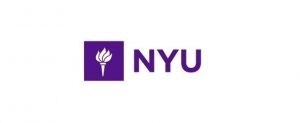 A team of physicists scientists from New York Univesity, TU Wien (Vienna), ETH Zurich, Free University of Berlin, and the Max-Planck Institute of Quantum Optics, has illuminated certain properties of quantum systems by observing how their fluctuations spread over time. The research offers an intricate understanding of a complex phenomenon that is foundational to quantum computing—a method that can perform certain calculations significantly more efficiently than conventional computing. One researchers such precise characterization could also lead to better quantum sensors. Quantum News Briefs summarizes the findings from the NYU site.
A team of physicists scientists from New York Univesity, TU Wien (Vienna), ETH Zurich, Free University of Berlin, and the Max-Planck Institute of Quantum Optics, has illuminated certain properties of quantum systems by observing how their fluctuations spread over time. The research offers an intricate understanding of a complex phenomenon that is foundational to quantum computing—a method that can perform certain calculations significantly more efficiently than conventional computing. One researchers such precise characterization could also lead to better quantum sensors. Quantum News Briefs summarizes the findings from the NYU site.
“In an era of quantum computing it’s vital to generate a precise characterization of the systems we are building,” explains Dries Sels, an assistant professor in New York University’s Department of Physics and an author of the paper, which appears in the journal Nature Physics. “This work reconstructs the full state of a quantum liquid, consistent with the predictions of a quantum field theory—similar to those that describe the fundamental particles in our universe.”
Sels adds that the breakthrough offers promise for technological advancement.
“Quantum computing relies on the ability to generate entanglement between different subsystems, and that’s exactly what we can probe with our method,” he notes. “The ability to do such precise characterization could also lead to better quantum sensors—another application area of quantum technologies.”
The research team, which included scientists from TU Wien (Vienna), ETH Zurich, Free University of Berlin, and the Max-Planck Institute of Quantum Optics, calculated quantum information measures of a quantum system via a tomography procedure—the reconstruction of a specific quantum state with the aim of seeking experimental evidence of a theory. Click here to read complete article on NYU website.
L3Harris harnessing quantum technologies for its aerospace & defense customers
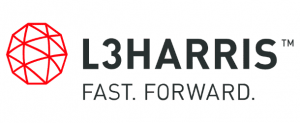 L3Harris is actively developing systems and techniques that harness the unique behavior of quantum nature to improve sensitivity and security for processing, sensing and networking on aircraft, spacecraft and many other uses. Quantum News Briefs summarizes April 17 article in MarketScreener.
L3Harris is actively developing systems and techniques that harness the unique behavior of quantum nature to improve sensitivity and security for processing, sensing and networking on aircraft, spacecraft and many other uses. Quantum News Briefs summarizes April 17 article in MarketScreener.
‘The revolution in quantum technologies and artificial intelligence will be the dominant disruptors over the next five years.’ said Pat O’Reilly, L3Harris Vice President of Corporate Strategy. ‘There is an urgent need to gain an equal understanding of the tremendous impact quantum technologies will have on the aerospace and defense industry by the end of this decade. Quantum sensors, networks, encryptors, memories and processors will increase our capacity to transmit data, sense and analyze images, and process calculations more securely and at several orders of magnitude greater than any capability today.’
L3Harris is harnessing quantum technologies in different ways that all come back to providing aerospace and defense customers the capabilities they require when they most need them.
L3Harris is combining expertise in photonics with research into quantum integrated circuits to generate and control photonics for information processing. This results in reduced size, weight and power, making the circuits appropriate for applications that would be previously impossible.
L3Harris places great emphasis on working with academic institutions, international standards committees, consortia, U.S. service laboratories, national laboratories, and small businesses to further and accelerate research and development of useful quantum applications.
That includes a project with the Defense Advanced Research Projects Agency to help determine potential quantum computing benefits across defense, chemistry, finance, machine learning and other areas. That is just one example of current projects with research agencies that are pushing the boundaries of what is possible when applying these technologies. Click here for complete article on MarketScreener.
Sandra K. Helsel, Ph.D. has been researching and reporting on frontier technologies since 1990. She has her Ph.D. from the University of Arizona.




















